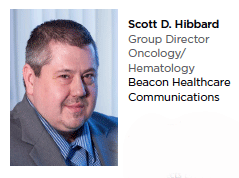 These days, the term “rare disease" is well ingrained in our everyday vernacular — but that hasn’t always been the case. The pharmaceutical industry paid little attention to developing new treatments for rare disease prior to the Reagan Administration’s implementation of the Orphan Drug Act (ODA) in 1983, which provided incentives for pharmaceutical companies to focus on rare disease. The FDA’s more recent Breakthrough Therapy Designation similarly incentivizes the industry on the unmet needs in rare disease while also allowing a higher degree of access to regulators and has further prodded the industry to develop new treatments.
These days, the term “rare disease" is well ingrained in our everyday vernacular — but that hasn’t always been the case. The pharmaceutical industry paid little attention to developing new treatments for rare disease prior to the Reagan Administration’s implementation of the Orphan Drug Act (ODA) in 1983, which provided incentives for pharmaceutical companies to focus on rare disease. The FDA’s more recent Breakthrough Therapy Designation similarly incentivizes the industry on the unmet needs in rare disease while also allowing a higher degree of access to regulators and has further prodded the industry to develop new treatments.
While the ODA and other designations greatly increased the volume of new treatment submissions across a multitude of rare diseases, it has often been used to fast-track a brand to market with the intent to later expand its label into a more profitable indication. Government incentives, pharma integration into patient/caregiver advocacy groups, and more “relaxed" filings/reviews have ushered in a highly successful market in rare disease. However, exploitation of the system coupled with extremely high sticker prices may now be causing negative industry perceptions.
Pros and Cons of Big Pharma’s Focus on Rare Disease
Pharma’s focus on rare disease has not been without its challenges. A lot of the low-hanging fruit has been harvested over the past few decades, leaving many categories with small patient populations, or fragmented disorders that demand more research to move forward. It becomes even more complicated when more than one company is conducting competitive trials. For example: over the past few years LFB/HEMA Biologics have been running trials for their investigational biologic activated eptacog beta (coagulation factor VIIa, recombinant), for treating hemophilia A/B with inhibitors. With such a small number of patients to draw from and with larger companies, such as Roche/Genentech, vying for similar patient types, recruitment methods were critical (especially for around 12-24 patients).
The small pool of patients in many rare disease sectors is not only an obstacle in the clinic, it also affects pricing and access once approved, and brings up questions on compassionate use and expanded access (e.g., half of a treatment population could be supplied via expanded access programs, which would diminish profitability at launch).
The hefty price tags associated with developing rare disease treatments coupled with pharma’s obsession with rare disease means that payers are no longer taking a back seat when granting access to new treatments and are looking to risk-sharing strategies to mitigate costs. In some instances, payers are negotiating with manufacturers to develop new reimbursement models, including linking level of covered cost to efficacy and quality-of-life outcomes.
Many big pharmaceutical companies are shying away from developing novel treatments for general disorders (e.g., diabetes, blood pressure, cholesterol), and instead focusing on much smaller populations that come with fast-track approvals and much higher financial potential. While it is a good business decision to develop a treatment for a population of 1,000 with a treatment cost of $200,000/month versus a new therapy that may treat 100,000 at $125/month, it may create backlash with approval agencies and payers across the globe. That’s one reason companies like Alexion, after being noted on the list of most expensive treatments, is making a move from targeting ultra-rare disease to finding new diseases that aren’t as rare and adjusting their pricing model (their second-generation drug Ultomiris is being launched at a 10% reduction to their first-generation product).
Future of Targeting Rare Disease
In the decade prior to the ODA, only 10 industry-sponsored rare disease brands were brought to market. In the 36 years since the ODA was signed into law, the FDA has approved 600 orphan drug indications from over 450 diverse products. After record years in 2014-15 for rare disease drug submissions/approvals, 2016 only saw 34 new orphan indications approved, and in 2017 only 18 of CDER’s 46 novel drug approvals had orphan status. Even with a continued global influx of new drug applications, it’s estimated that fewer than 600 of the known 7,000 rare diseases will be addressed by new approvals in the next decade. More than 90% of rare diseases do not have FDA-approved treatments; however, with 85% of rare disease being genetic in nature, there is an amazing opportunity as we grow our understanding of the genome relative to rare disease.
Looking to the future, it will be imperative to find new methods of working with payers and advocacy groups, while addressing growing concerns of orphan status abuse and price gouging. That said, with so many unmet needs in rare disease treatment, it is expected that the trend to maintain a rare disease focus, especially in the areas of oncology, hematology, and immunology, will remain steady with plenty of opportunity to go around.(PV)
Beacon Healthcare Communications is a specialty pharmaceutical agency that helps its clients stand out in a sea of data. Beacon specializes in clearly and effectively communicating the science behind rare disease and orphan drugs, and prides itself on partnering with industry leaders to develop sound strategy that permeates every tactic and creative execution.
Our team members have a personal connection with, and passion for, assisting those affected by rare disease. Our depth of experience and advanced category knowledge enables us to master a given brand and category to supply highly engaging, strategic programs at crucial points along the patient and HCP journey.
For more information, visit www.BeaconHC.com.


















